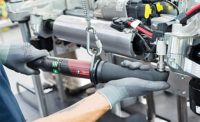As with most endeavors where success can’t be measured by keeping score, a good job of engineering is often defined by not doing a bad job. In other words, the most direct measurement of successful joint design and assembly is a lack of joint problems.
As an independent test lab, we evaluate joint capabilities, failure modes and root causes of operational joint failure. This provides me an opportunity to survey what joint characteristics and development decisions are likely to reduce the capacity or reliability of bolted joints across a wide range of industries and applications.
Here’s a brief look at the most common reasons why problems occur during joint design, joint assembly and troubleshooting.
Joint Design:
- Installation torque is established without specific testing of the torque-tension relationship (how much bolt tension is generated for a given torque input) or joint behavior (whether unexpected events occur during tightening). Without this knowledge, the joint’s suitability is an educated guess. Whether this is a cause for concern is largely dependent on the cost of failure.
- The compressive strength of a joint member is exceeded before the installation torque is reached. In most structural joints, the fastener should be much less stiff than the clamped members and be the first element to yield under increasing clamp load. When this is not the case, unexpected joint behavior often results.
- Inadequate consideration is given to the effect of the grip length to fastener diameter ratio on sensitivity to relaxation and resistance to loosening. Use of a larger diameter fastener is often incorrectly seen as providing an added safety factor-in fact, it can actually increase the tendency for vibrational loosening.
Joint Assembly:
- Run-down sequence, driver type, driver speed, assembly tooling, and tightening strategy all influence the outcome of tightening a fastener. Often, no investigation of these factors is undertaken before a fastening operation is established. The lack of two-dimensional visualization makes investigation difficult.
- When fastening problems occur in a production environment, personnel with joint engineering experience or people with the authority to make design changes are often unavailable. The pressure to maintain production then leads to inadequate solutions that don’t address the root cause, resulting in a lingering problem.
- Even when it’s performed, the benefit of joint development and validation testing is not always optimized due to disconnects between the testing organization and the plant. Test parameters can either be unrealistically lab-oriented or production can override the parameters under which test results were generated to increase production rates. Communication beyond noting the recommended installation torque on a test report is often absent.
Troubleshooting:
- Attempting to assign cause to a problem without diagnostic tools is time-consuming and often results in a lot of scrap. Understanding increases exponentially when joint behavior can be viewed in two dimensions by creating an X-Y graph of two parameters. The most widely used graph is the torque-angle plot, which reveals changes in apparent joint stiffness. A wide variety of causes can be uncovered with this simple tool Surprisingly, only a small percentage of the users of controlled tools, which contain a torque transducer and angle encoder, actually use this graph. For structural joints where clamp load is critical, bolt tension can be measured in real-time. This eliminates the impact of friction variation on the torque-angle plot and greatly increases investigative capability.
- When bolt fracture or thread strip occurs, engineers typically call their fastener supplier first. However, it is more likely that the person who should be informed can be reached on an internal extension rather than an outside line. Unless the specified fastener was substituted for, it is far more likely the issue is based on joint design or assembly parameters than a fastener not meeting spec.*
- As with any form of problem-solving in a stressful production environment, the inclination to start trying things in the hopes it will work is very strong. However, it’s better to rein in this desire and determine if this assembly problem is a process that was never really in control. For instance, did some small incremental variation make the problem visible? Or, did a distinct change in product or process occur? The person with the best answer to that question will always be the joint's "mom"-the operator who lives with it every day. The investigator's job, like the pediatrician's, is to ask questions that will obtain objective information.
Without question, the greatest barrier to assembling efficient and reliable bolted joints is the belief that, because threaded fasteners are seen as a ubiquitous commodity, the engineering required to implement them shouldn’t be more involved than picking a torque value from a table. A



